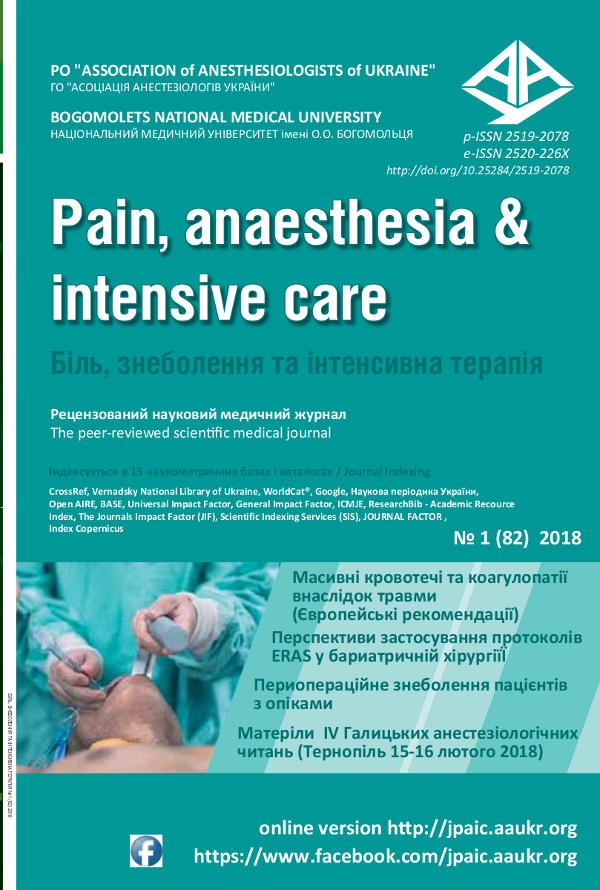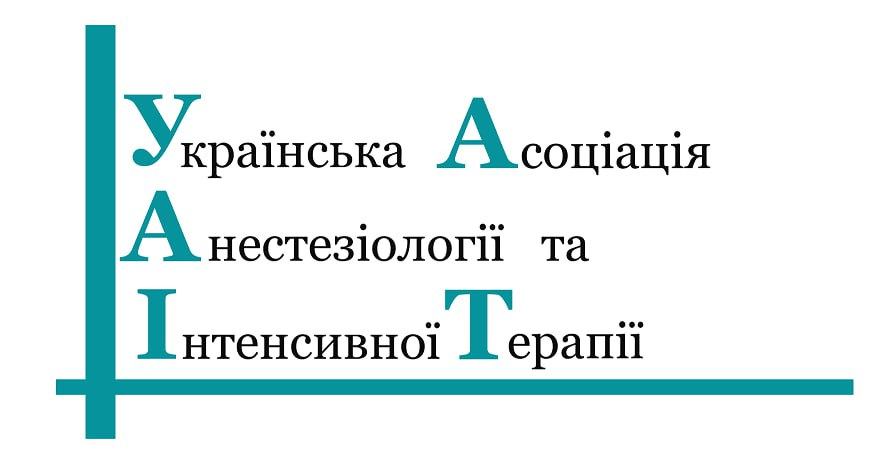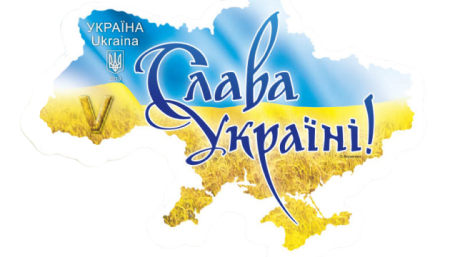Сучасні підходи до терапії опікового шоку
DOI:
https://doi.org/10.25284/2519-2078.1(82).2018.121957Ключові слова:
опікова травма, опіковий шок, синдром "капілярної витоку"Анотація
Стаття являє собою огляд публікацій 2015-2017 рр. з проблем інфузійної терапії опікового шоку. Відновлення центральної і периферичної гемодинаміки в гострому періоді опікової травми є надзвичайно складною проблемою в зв'язку з тим, що рідина особливо погано утримується в кровоносному руслі внаслідок синдрому "капілярного витоку". Великий обсяг інфузії небезпечний розвитком інтерстиціального набряку тканин і поліорганної недостатності, тому основна частина досліджень присвячена розробці нових методів оптимальної інфузійної терапії опікового шоку. Наданий період часу найкращі результати в лікуванні опікового шоку досягаються за допомогою стратегії ранньої цільової індивідуалізованої терапії. Ця стратегія передбачає диференційований підбір комбінації колоїдних і кристалоїдних розчинів під постійним контролем гемодинаміки за допомогою інструментальних методів. Подальше підвищення ефективності лікування опікового шоку дослідники пов'язують із застосуванням комп'ютеризованих систем моніторингу інфузійної терапії, а також з удосконаленням застосованих для трансфузії розчинів.
Посилання
Armstrong JR, Willand L, Gonzalez B, Sandhu J, Mosier M. Quantitative Analysis of Estimated Burn Size Accuracy for Transfer Patients. Journal of Burn Care & Research. 2017;38(1): 30-35.
 |
|  |
| 
Brownson EG, Pham TN, Chung KK. How to Recognize a Failed Burn Resuscitation. Critical care clinics. 2016; 32 (4): 567-575.
 |
|  |
| 
Cancio LC. Burn State of the Science: Fluid Resuscitation Erratum. Journal of Burn Care & Research. 2017;38(4): 269-277.
 |
| 
Cancio LC, Salinas J, Kramer GC. Protocolized resuscitation of burn patients. Critical care clinics. 2016. - Т. 32. - No. 4. - С. 599-610.
 |
|  |
| 
Cartotto R, Greenhalgh D . Colloids in acute burn resuscitation. Critical care clinics. 2016; 32(4):507-523.
 |
|  |
| 
Cartotto R, Greenhalgh DG., Cancio C. Burn State of the Science: Fluid Resuscitati on. Journal of Burn Care & Research. 2017;38(3):596-604.
Cartotto R, Li Z, Hanna S, Spano S, Wood D, Chung K, et al. The Acute Respiratory Distress Syndrome (ARDS) in mechanically ventilated burn patients: An analysis of risk factors, clinical features, and outcomes using the Berlin ARDS definition. Burns. 2016;42(7):1423-1432.
 |
|  |
| 
Caruso DM, Matthews MR. Monitoring End Points of Burn Resuscitation. Critical care clinics. 2016;32(4):525-537.
 |
|  |
| 
Chen ZH, Jin CD, Chen S, Chen XS, Wang ZE, Liu W, et al. The application of early goal directed therapy in patients during burn shock stage. International journal of burns and trauma. 2017; 7(3):27-34.
Clemens MS, Stewart IJ, Sosnov JA, Howard JT, Belenkiy SM, Sine CR, et al. Reciprocal risk of acute kidney injury and acute respiratory distress syndrome in critically ill burn patients. Critical care medicine. 2016;44(10):915-922.
 |
|  |
| 
De Leeuw K, Niemeijer AS, Eshuis J, Nieuwenhuis MK, Beerthuizen M, Janssen WM. Effect and mechanism of hydrocortisone on organ function in patients with severe burns. Journal of critical care. 2016;36:200-206.
 |
|  |
| 
Doig GS. Albumin may significantly increase mortality in burn patients: Re-analysis of a systematic review. Burns. 2017;43(2):449-450.
 |
|  |
| 
Eljaiek R, Heylbroeck C, Dubois MJ. Albumin administration for fluid resuscitation in burn patients: a systematic review and meta-analysis. Burns. - 2017. - Т. 43. - No. 1. - С. 17-24.
 |
|  |
| 
Eljaiek R, Heylbroeck C, Dubois MJ. Response to Letter to the Editor: Albumin may significantly increase mortality in burn patients: Re-analysis of a systematic review. Burns. 2017; 43(2):50-451.
Foster KN, Caruso DM. Fluid Resuscitation in Burn Patients: Current Care and New Frontiers. Critical care clinics. 2016;32(4)15-19.
 |
|  |
| 
Gillenwater J, Garner W. Acute Fluid Management of Large Burns. Clinics in Plastic Surgery. 2017; 44(3):495-503.
 |
|  |
| 
Gong C, Zhang F, Li L, He F, Liu G, Zhu S,. et al. The Variation of Hemodynamic Parameters Through PiCCO in the Early Stage After Severe Burns. Journal of Burn Care & Research. 2017;38(6):966-972.
 |
|  |
| 
Guilabert P, Us?a G, Mart? n N, Abarca L, Barret JP, Colomina MJ. Fluid resuscitation management in patients with burns: update. Britis h Journal of Anaesthesia. 2016;117(3):284-296.
 |
|  |
| 
Guo SX, Zhou HL, You CG, Han CM. Advances in the research of acute kidney injury post burn. Chinese journal of burns. 2016;32(8):508-511.
 |
| 
Habib ME, Saadah LM, Al -Samerrae M, Shoeib FE, Mamoun M, Latif GA, et al. Does Ringer Lactate Used in Parkland Formula for Burn Resuscitation Adequately Restore Body Electrolytes and Proteins? Modern Plastic Surgery. 2017;7(01):1-9.
Harrington DT. Complicated Burn Resuscitation. Critical care clinics. 2016;32(4):577-586.
 |
| 
Held JM, Litt J, Kennedy JD, McGrane S, Gunter OL, Rae L, et al. Surgeon-performed hemodynamic transesophageal echocardiography in the burn intensive care unit. Journal of Burn Care & Research. 2016;37(1):63-68.
 |
| 
Hodgman EI, Subramanian M, Arnoldo BD, Phelan HA, Wolf SE. Future therapies in burn resuscitation. Critical care clinics. 2016;32(4):611-619.
 |
| 
Holley A, Cook A, Lipman J. Burn Patients and Blood Product Transfusion Practice: Time for a Consensus? Annual Update in Intensive Care and Emergency Medicine. New York: Springer International Publishing; 2017. р. 359-371.
Hunter JE, Drew PJ, Potokar TS, Dickson W, Hemington-Gorse SJ, et al. Albumin resuscitation in burns: a hybrid regime to mitigate fluid creep. Scars, Burns & Healing. 2016; 2:2059513116642083.

Janssen WMT. Individualizing Optimal Fluid Resuscitation in Patients with Major B urns: Emerging Role for Hydrocortisone, Proteinuria and Brain Natriuretic Peptide. Journal of Intensive and Critical Care. 2017;3(3):1-6.
Karcutskie CA, Proctor KG. Autonomous Resuscitation on the Horizon? Critical care medicine. 2017;45(10):1798-1799.
 |
| 
Lavrentieva A. Critical care of burn patients. New approaches to old problems. Burns. 2016; 42(1):13-19.
 |
| 
Liu NT, Fenrich CA, Serio-Melvin ML, Peterson WC, Cancio LC, et al. The impact of patient weight on burn resuscitation. Journal of trauma and acute care surgery. 2017; 83(1):112-119.
 |
| 
Liu NT, Salinas J, Fenrich CA., Serio-Melvin ML, Kramer GC, Driscoll IR, et al. Predicting the proportion of full-thickness involvement for any given burn size based on burn resuscitation volumes. Journal of Trauma and Acute Care Surgery. 2016;81(5):144-149.
 |
| 
Liu NT, Salinas J, Fenrich CA, Serio-Melvin ML., Kramer GC, Driscoll IR, et al. Burn severity scores-panacea for predicting multiple outcomes in severely burned patients requiring active fluid resus citation? Shock. 2017; 47(6): 42-43.
Mbiine R, Alenyo R, Kobusingye O, Kuteesa J, Nakanwagi C, Lekuya HM, et al. Intra-abdominal hypertension in severe burns: prevalence, incidence and mortality in a sub-Saharan African hospital. International journal of burns and trauma. 2017;7(6):80-87.
Navickis RJ, Greenhalgh DG, Wilkes MM. Albumin in burn shock resuscitation: a meta-analysis of controlled clinical studies. Journal of Burn Care&Research. 2016; 37(3): 268-78.
 |
| 
Ng JWG, Cairns SA, O'Boyle CP. Management of the lower gastrointestinal system in burn: A comprehensive review. Burns. 2016;42(4):728-737.
 |
| 
Palmieri TL, Holmes JH, Arnoldo B, Peck M, Potenza B, Cochran A, et al. Transfusion Requirement in Burn Care Evaluation (TRIBE): A Multicenter Randomized Prospective Trial of Blood Transfusion in Major Burn Injury. Annals of Surgery. 2017;266(4):595-602.
 |
| 
Peeters Y, Vandervelden S, Wise R, Malbrain M. An overview on fluid resuscitation and resuscitation endpoints in burns: Past, present and future. Part 1-historical background, resuscitation fluid and adjunctive treatment. Anaesthesiology intensive therapy. 2015;47:6-14.
 |
| 
Peeters Y, Vandervelden S, Wise R, Malbrain M. An overview on fluid resuscitation and resuscitation endpoints in burns: Past, present and future. Part 2-avoiding complications by using the right endpoin ts with a new personalized protocolized approach. Anaesthesiology intensive therapy. 2015; 47:15-26.
 |
| 
Plassais J. Venet F, Cazalis MA, Le Quang D, Pachot A, Monneret G, et al. Transcriptome modulation by hydrocortisone in severe burn shock: ancillary analysis of a prospective randomized trial. Critical Care. 2017;21(1):158-166.
 |
| 
Rae L, Fidler P, Gibran N. The Physiologic Basis of Burn Shock and the Need for Aggressive Fluid Resuscitation. Critical care clinics. 2016;32(4):491-505.
 |
| 
Sadideen H, D'Asta F, Mo iemen N, Wilson Y. Does Overestimation of Burn Size in Children Requiring Fluid Resuscitation Cause Any Harm? Journal of Burn Care & Research. 2017; 38(2):546-551.
 |
| 
Saffle JR. Fluid Creep and Over-resuscitation. Critical care clinics. 2016;32(4):587-598.
 |
| 
S?nchez-S?nchez M, Garc?a-de-Lorenzo A, Asensio MJ. First resuscitation of critical burn patients: progresses and problems. Medicina intensiva. 2016;40(2):118-124.
 |
| 
Serio-Melvin ML, Salinas J, Chung KK. Burn Shock and Resuscitation: Proceedings of a Symposium Conducted at the Meeting of the American Burn Association. Journal of Burn Care & Research. 2017;38(1):423-431.
 |
| 
Sheridan R. Less Is More-Revisiting Burn Resuscitation. Pediatric Critical Care Medicine. 2016;17(6):578-579.
 |
| 
Smolle C., Cambiaso-Daniel J., Forbes A.A., Wurzer P., Hundeshagen G., Branski L.K. et al. Recent trends in burn epidemiology worldwide: A systematic review. Burns. 2017;43(2):249-257.
 |
| 
Soussi S, Deniau B, Ferry A, Lev? C, Benyamina M, Maurel V, et al. Low cardiac index and stroke volume on admission are associated with poor outcome in critically ill burn patients: a retrospective cohort study. Annals of intensive care. 2016;6(1):87-97.
 |
| 
Soussi S, Legrand M. Hemodynamic coherence in patients with burns. Best Practi ce & Research Clinical Anaesthesiology. 2016;30(4):437-443.
 |
| 
Thalji SZ, Kothari AN, Kuo PC, Mosier MJ. Acute Kidney Injury in Burn Patients: Clinically Significant Over the Initial Hospitalization and 1 Year After Injury: An Original Retrospective Cohort Study. Annals of surgery. 2017;266(2): 376-382.
 |
| 
Viv? C, Galeiras R, del Caz MD. Initial evaluation and management of the critical burn patient. Medicina intensiva. 2016;40(1):49-59.
 |
| 
Wasiak J, Tyack Z, Ware R, Goodwin N, Faggion MC. Poor methodological quality and reporting standards of systematic reviews in burn care management. International wound journal. 2017;14(5):754-763.
 |
| 
Wise R, Jacobs J, Pilate S, Jacobs A, Peeters Y, Vandervelden S, et al. Incidence and prognosis of intra-abdominal hypertension and abdomina l compartment syndrome in severely burned patients: Pilot study and review of the literature. Anaesthesiology intensive therapy. 2016; 48(2):95-109.
 |
| 
Wurzer P, Branski LK, Jeschke MG, Ali A, Kinsky M, Bohanon FJ, et al. Transpulmonary thermodilution versus transthoracic echocardiog raphy for cardiac output measurements in severely burned children. Shock. 2016;46(3):249-253.
 |
| 
Yost R. A Comment on a Meta-analysis That Suggests Efficacy of Albumin in Burn Shock Resuscitation. Journal of Burn Care & Research. 2017;38( 5):882-889.
 |
| 
Кollias S, Stampolidis N, Кourakos P, Mantzar EI, Koupidis S, Tsaousi S, et al. Abdominal compartment syndrome (ACS) in a severely burned patient. Annals of burns and fire disasters. 2015;28(1):5-12.
 |
| 
##submission.downloads##
Опубліковано
Як цитувати
Номер
Розділ
Ліцензія
Авторське право (c) 2018 В. І. Березуцький

Ця робота ліцензується відповідно до Creative Commons Attribution-NonCommercial 4.0 International License.
Автори, які публікуються у цьому журналі, погоджуються з наступними умовами:
a. Автори залишають за собою право на авторство своєї роботи та передають журналу право першої публікації цієї роботи на умовах ліцензії Creative Commons Attribution-NonCommercial 4.0 International License, котра дозволяє іншим особам вільно розповсюджувати опубліковану роботу з обов'язковим посиланням на авторів оригінальної роботи та першу публікацію роботи у цьому журналі.
b. Автори мають право укладати самостійні додаткові угоди щодо неексклюзивного розповсюдження роботи у тому вигляді, в якому вона була опублікована цим журналом (наприклад, розміщувати роботу в електронному сховищі установи або публікувати у складі монографії), за умови збереження посилання на першу публікацію роботи у цьому журналі.
c. Політика журналу дозволяє і заохочує розміщення авторами в мережі Інтернет (наприклад, у сховищах установ або на особистих веб-сайтах) рукопису роботи, як до подання цього рукопису до редакції, так і під час його редакційного опрацювання, оскільки це сприяє виникненню продуктивної наукової дискусії та позитивно позначається на оперативності та динаміці цитування опублікованої роботи (див. The Effect of Open Access).








